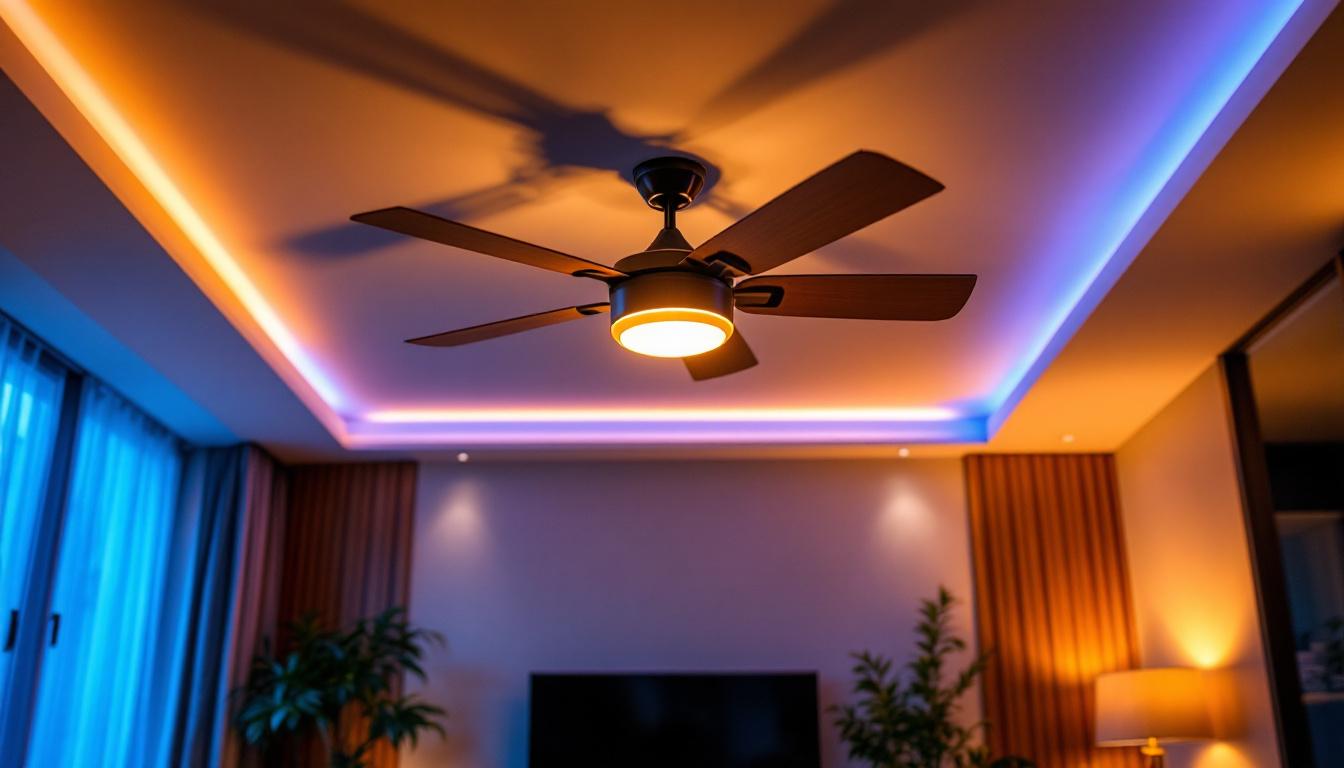
As the demand for efficient and effective lighting solutions increases, LED technology has emerged as a popular choice among lighting contractors. Garage lights, in particular, require a unique combination of brightness, energy efficiency, and durability. This article delves into the pros and cons of LED garage lights, providing valuable insights for lighting contractors seeking the best options for their clients.
One of the most significant advantages of LED garage lights is their energy efficiency. Unlike traditional incandescent or fluorescent bulbs, LEDs consume significantly less power while providing the same or even greater illumination. This efficiency translates to lower electricity bills, making them an attractive option for both contractors and end-users.
Moreover, the longevity of LED lights means that they require less frequent replacements. This not only saves money in the long run but also reduces the environmental impact associated with manufacturing and disposing of light bulbs. For contractors, recommending energy-efficient solutions can enhance their reputation as environmentally conscious professionals. Additionally, many utility companies offer rebates or incentives for the installation of energy-efficient lighting, further sweetening the deal for those looking to upgrade their garage lighting systems.
LED garage lights are known for their superior brightness and quality of light. With the ability to produce high lumen outputs, they ensure that garages are well-lit, enhancing visibility and safety. This is particularly important in workspaces where precision is required, such as automotive repairs or woodworking.
Additionally, LED lights offer a range of color temperatures, allowing contractors to select the ideal lighting for different tasks. Whether a warm white light is needed for a cozy atmosphere or a cool daylight option for clarity and focus, LEDs can meet diverse client needs. The ability to adjust color temperature can also help reduce eye strain during extended work sessions, making LED lights a healthier choice for those who spend significant time in their garages.
Another compelling reason to choose LED garage lights is their durability. Constructed with robust materials, LEDs are resistant to shocks, vibrations, and temperature fluctuations. This resilience makes them ideal for garages, which often experience harsh conditions.
Furthermore, LED lights have a significantly longer lifespan compared to traditional bulbs. While incandescent bulbs may last around 1,000 hours, LEDs can shine for up to 25,000 hours or more. This longevity means less frequent replacements, making them a cost-effective choice for both contractors and their clients. In addition, many LED fixtures come with warranties that can last several years, providing extra peace of mind for users. The combination of durability and extended lifespan not only enhances the overall value of LED garage lights but also contributes to a more sustainable approach to lighting, as fewer resources are consumed over time for replacements.
Despite their numerous advantages, the initial cost of LED garage lights can be a barrier for some clients. While prices have decreased over the years, they still tend to be higher than traditional lighting options. This upfront investment can deter budget-conscious customers, particularly those who may not fully understand the long-term savings associated with energy efficiency and longevity.
Lighting contractors must be prepared to educate their clients on the overall value of investing in LED technology. By highlighting the benefits of reduced energy bills and longer lifespans, contractors can help clients see beyond the initial cost and appreciate the long-term savings. Additionally, it is worth noting that many utility companies offer rebates or incentives for switching to energy-efficient lighting, which can further offset the initial expenditure. By presenting a comprehensive cost-benefit analysis, contractors can effectively demonstrate how the initial investment can yield significant returns over time, making the transition to LED lighting a financially sound decision.
Another consideration for contractors is the compatibility of LED lights with existing fixtures. In some cases, older fixtures may not be designed to accommodate LED bulbs, leading to potential issues with installation or performance. This can result in additional costs for clients if retrofitting or replacing fixtures becomes necessary.
Contractors should assess the compatibility of LED lights with existing systems and advise clients accordingly. Offering solutions, such as compatible fixtures or adapters, can help mitigate these concerns and ensure a smooth installation process. Furthermore, it’s important for contractors to stay updated on the latest advancements in LED technology, as newer fixtures may provide better compatibility options and enhanced performance features. By proactively addressing these compatibility issues, contractors can not only save clients from unexpected costs but also enhance the overall lighting experience in the garage.
The Color Rendering Index (CRI) is a critical factor in lighting quality, particularly in garages where accurate color representation is essential. While many LED lights offer a high CRI, some lower-quality options may not render colors accurately, leading to potential issues in tasks that require precision.
Lighting contractors must be diligent in selecting LED products with a high CRI, ensuring that clients receive the best quality lighting for their needs. Educating clients on the importance of CRI can also help them make informed decisions when choosing their garage lighting solutions. Moreover, it is beneficial to explain how different CRI levels can affect visibility and safety in the garage environment. For instance, a higher CRI can make it easier to distinguish between colors when working on automotive repairs or other projects, thereby enhancing both safety and efficiency. By emphasizing these practical implications, contractors can further underscore the value of investing in high-quality LED lighting options.
LED shop lights are a popular choice for garages due to their versatility and high lumen output. These fixtures can be mounted on ceilings or walls, providing ample illumination for various tasks. Many models come with adjustable brightness settings, allowing users to customize the lighting to suit their specific needs.
Contractors should consider recommending LED shop lights for garages that serve multiple purposes, such as workshops or storage areas. Their adaptability makes them an excellent option for clients looking for a comprehensive lighting solution.
For larger garages or commercial spaces, LED high bay lights are an ideal choice. These fixtures are designed to provide powerful illumination over expansive areas, making them perfect for automotive shops or warehouses. High bay lights are typically mounted at greater heights, ensuring that light reaches every corner of the space.
Contractors should assess the height and size of the garage when recommending high bay lights. Proper placement and spacing are crucial to achieving optimal lighting levels, enhancing both safety and functionality.
LED flood lights offer another versatile option for garage lighting. These fixtures can illuminate outdoor areas or provide additional lighting for specific tasks within the garage. With adjustable angles and brightness levels, flood lights can be tailored to meet the unique needs of each client.
When suggesting LED flood lights, contractors should consider the intended use of the garage. For instance, if the space will be used for outdoor activities or parking, flood lights can enhance visibility and security.
When installing LED garage lights, it is essential to consider the wiring and electrical requirements. While many LED fixtures are designed for easy installation, some may require specific wiring configurations or additional components to function correctly.
Contractors should assess the existing electrical system and ensure that it can support the new LED lights. This may involve upgrading wiring or installing new circuits, which can add to the overall project cost. Providing clients with a clear understanding of these requirements can help manage expectations and facilitate a smoother installation process.
Proper placement and spacing of LED garage lights are crucial for achieving optimal illumination. Contractors should consider factors such as ceiling height, the layout of the garage, and the intended use of the space when determining the best locations for fixtures.
Utilizing lighting design software or tools can assist contractors in visualizing the lighting layout and ensuring even distribution of light. This attention to detail can significantly enhance the overall effectiveness of the lighting solution, leading to satisfied clients.
Compliance with local building and electrical codes is a vital aspect of any lighting installation. Contractors must familiarize themselves with relevant regulations to ensure that their work meets safety standards and legal requirements.
Failure to comply with local codes can lead to fines, project delays, or even safety hazards. By staying informed and adhering to regulations, contractors can protect their reputation and ensure a successful installation.
In conclusion, LED garage lights offer a range of advantages that make them an appealing choice for lighting contractors and their clients. From energy efficiency and brightness to durability and longevity, the benefits of LED technology are clear. However, it is essential to consider the potential drawbacks, such as initial costs and compatibility issues, when making recommendations.
By understanding the different types of LED garage lights available and the installation considerations involved, contractors can provide tailored solutions that meet their clients’ needs. Educating clients on the long-term benefits of LED lighting can also help overcome any hesitations they may have about the initial investment.
Ultimately, the right choice in garage lighting can enhance safety, functionality, and aesthetics, making it a worthwhile consideration for any lighting contractor. As the industry continues to evolve, staying informed about the latest advancements in LED technology will ensure that contractors remain at the forefront of providing exceptional lighting solutions.
Ready to elevate your lighting game? Look no further than LumenWholesale for a seamless blend of quality, affordability, and convenience. As a lighting contractor, you understand the importance of reliable, high-performance lighting. That’s why we offer an extensive selection of top-quality, spec-grade LED garage lights at unbeatable wholesale prices. Say goodbye to inflated markups and hello to premium lighting solutions that meet the highest industry standards. Plus, with free shipping on bulk orders, you can stock up on the best value lighting without any hidden fees. Enhance the safety, functionality, and aesthetics of your projects with LumenWholesale. Wholesale Lighting at the Best Value is just a click away!

Discover how motion detectors for LED lights are revolutionizing efficiency for lighting contractors.

Explore the innovative use of solar power lights for graves and their surprising impact on energy efficiency.

Discover the essential role ceiling fan parts play in lighting installations.

Discover essential tips and insights on selecting the perfect LED light sizes for your projects.